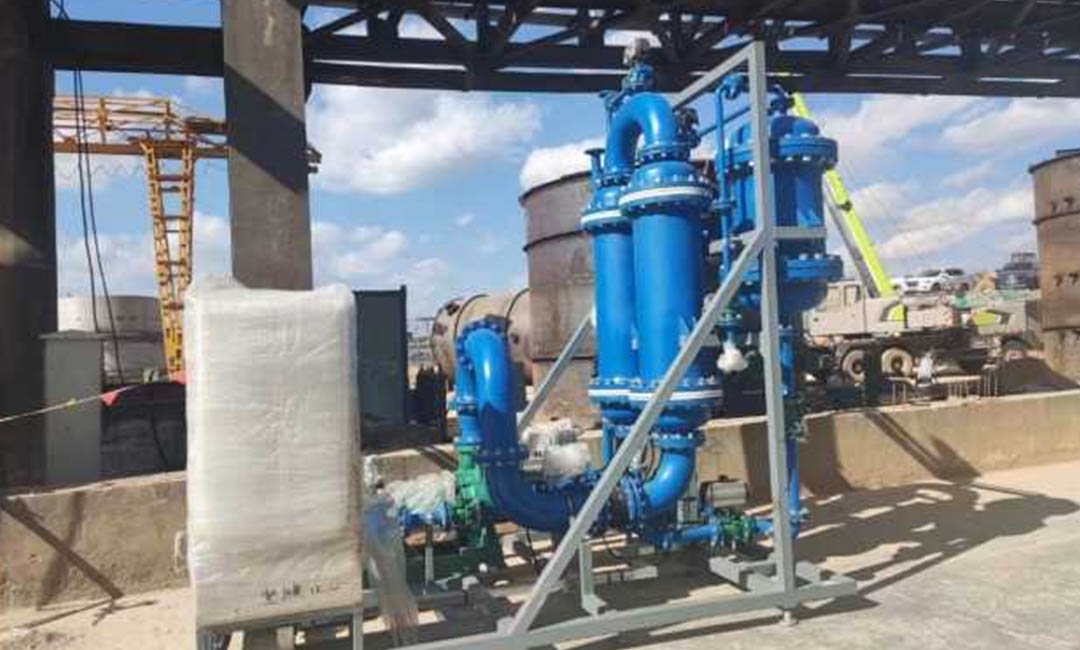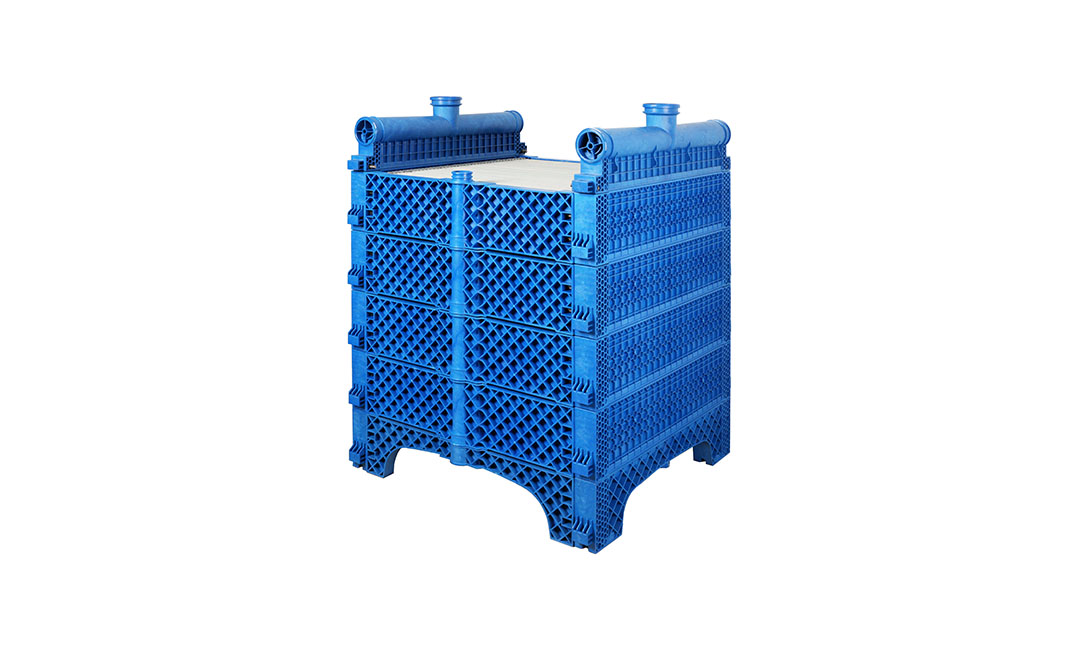Superior Chemical and Thermal Stability
Silicon carbide (SiC) membrane separation technology has gained significant attention in recent years due to its superior chemical and thermal stability, making it ideal for use in harsh environments. This innovative technology offers a range of benefits that set it apart from traditional membrane materials, such as polymeric membranes. One of the key advantages of SiC membranes is their ability to withstand extreme temperatures and aggressive chemical environments without compromising performance.

The exceptional chemical stability of SiC membranes is attributed to the inherent properties of the material. Silicon carbide is a highly inert and non-reactive compound that is resistant to a wide range of chemicals, including acids, bases, and organic solvents. This makes SiC membranes well-suited for applications in industries such as petrochemical, pharmaceutical, and wastewater treatment, where exposure to corrosive substances is common.
In addition to its chemical stability, SiC membranes also exhibit superior thermal stability, allowing them to operate at high temperatures without degradation. This is a critical advantage in applications where elevated temperatures are required for efficient separation processes, such as in the treatment of high-temperature wastewater streams or the recovery of valuable chemicals from industrial processes. The ability of SiC membranes to maintain their performance under extreme conditions makes them a reliable and cost-effective solution for demanding applications.

Another key benefit of SiC membrane technology is its mechanical strength and durability. Silicon carbide is a hard and robust material that can withstand mechanical stresses and pressures, making it highly resistant to fouling and damage. This durability ensures long-term performance and reliability, reducing maintenance costs and downtime associated with membrane replacement.
Furthermore, SiC membranes offer excellent fouling resistance, thanks to their smooth and hydrophilic surface properties. This minimizes the accumulation of contaminants on the membrane surface, leading to improved flux rates and longer membrane lifespan. The anti-fouling properties of SiC membranes make them an attractive option for applications where fouling is a common issue, such as in the treatment of oily wastewater or industrial process streams.
In addition to their superior chemical and thermal stability, SiC membranes also provide high selectivity and permeability, allowing for efficient separation of target molecules or particles. The unique pore structure of SiC membranes enables precise control over the size and shape of the particles that can pass through, making them suitable for a wide range of separation processes, from microfiltration to nanofiltration.
Overall, SiC membrane separation technology offers a combination of superior chemical and thermal stability, mechanical strength, fouling resistance, and selectivity that make it an ideal choice for use in harsh environments. Whether in the petrochemical industry, pharmaceutical manufacturing, or wastewater treatment plants, SiC membranes provide a reliable and cost-effective solution for demanding separation processes. With their exceptional performance and durability, SiC membranes are poised to revolutionize the field of membrane separation technology and drive innovation in a wide range of industrial applications.
High Corrosion Resistance
Silicon carbide (SiC) membrane separation technology has gained significant attention in recent years due to its exceptional properties that make it ideal for use in harsh environments. One of the key advantages of SiC membranes is their high corrosion resistance, which sets them apart from traditional membrane materials such as polymeric membranes.
SiC membranes are made from a material that is highly resistant to corrosion, making them suitable for use in environments where traditional membranes would quickly degrade. This high corrosion resistance is due to the chemical composition of SiC, which is a combination of silicon and carbon. This unique composition gives SiC membranes the ability to withstand exposure to corrosive chemicals, high temperatures, and extreme pH levels without deteriorating.
In industries such as oil and gas, petrochemicals, and wastewater treatment, where harsh chemicals are commonly used, SiC membranes offer a reliable solution for separating liquids and gases. The ability of SiC membranes to resist corrosion ensures that they can maintain their performance over an extended period, reducing the need for frequent replacements and minimizing downtime.
Furthermore, the high corrosion resistance of SiC membranes also makes them suitable for use in seawater desalination plants, where the presence of salt and other contaminants can cause traditional membranes to degrade quickly. SiC membranes can withstand the harsh conditions found in seawater desalination plants, providing a durable and long-lasting solution for producing clean drinking water.
Another advantage of SiC membranes is their resistance to fouling, which is the buildup of contaminants on the surface of the membrane that can reduce its efficiency. The smooth surface of SiC membranes prevents fouling from occurring, allowing for continuous operation without the need for frequent cleaning or maintenance.
In addition to their high corrosion resistance and fouling resistance, SiC membranes also offer excellent mechanical strength, thermal stability, and chemical inertness. These properties make SiC membranes highly versatile and suitable for a wide range of applications in harsh environments.
The use of SiC membranes in harsh environments can result in significant cost savings for industries that rely on membrane separation technology. By choosing SiC membranes over traditional membrane materials, companies can reduce maintenance costs, increase operational efficiency, and prolong the lifespan of their equipment.
Overall, SiC membrane separation technology is an ideal choice for industries operating in harsh environments due to its high corrosion resistance, fouling resistance, and overall durability. With the ability to withstand extreme conditions and provide reliable performance, SiC membranes offer a sustainable and cost-effective solution for separating liquids and gases in a wide range of applications.
In conclusion, the unique properties of SiC membranes make them well-suited for use in harsh environments where traditional membrane materials would struggle to perform. Industries looking to improve their operational efficiency and reduce maintenance costs should consider incorporating SiC membrane separation technology into their processes. By investing in SiC membranes, companies can benefit from a reliable and durable solution that can withstand the challenges of harsh environments.
Enhanced Mechanical Strength
Silicon carbide (SiC) membrane separation technology has gained significant attention in recent years due to its unique properties that make it ideal for use in harsh environments. One of the key advantages of SiC membranes is their enhanced mechanical strength, which sets them apart from traditional membrane materials such as polymers or ceramics.
The exceptional mechanical strength of SiC membranes can be attributed to the inherent properties of the material itself. Silicon carbide is a compound of silicon and carbon that exhibits high hardness, excellent thermal conductivity, and superior chemical resistance. These properties make SiC membranes highly durable and capable of withstanding extreme conditions, including high temperatures, corrosive chemicals, and abrasive particles.
In comparison to polymer membranes, which are prone to degradation and fouling in harsh environments, SiC membranes offer superior resistance to chemical attack and mechanical wear. This makes them well-suited for applications in industries such as oil and gas, petrochemicals, and wastewater treatment, where the operating conditions can be particularly challenging.
Furthermore, the enhanced mechanical strength of SiC membranes allows for higher operating pressures and temperatures, resulting in improved separation performance and efficiency. This is especially beneficial in processes that require high flux rates or the removal of contaminants with high molecular weight or concentration.
Another advantage of SiC membranes is their ability to be easily cleaned and regenerated, thanks to their robust structure. Unlike polymer membranes that may require frequent replacement due to fouling or degradation, SiC membranes can be cleaned using a variety of methods, including backwashing, chemical cleaning, and thermal treatment. This not only extends the lifespan of the membranes but also reduces maintenance costs and downtime.
Moreover, the mechanical strength of SiC membranes enables them to be used in a wide range of filtration applications, from microfiltration to ultrafiltration and nanofiltration. This versatility makes SiC membranes a cost-effective solution for various industries seeking to improve their separation processes and reduce environmental impact.
In conclusion, SiC membrane separation technology offers a unique combination of enhanced mechanical strength, chemical resistance, and durability that make it ideal for use in harsh environments. The superior properties of SiC membranes allow for higher operating pressures and temperatures, improved separation performance, and easier cleaning and regeneration compared to traditional membrane materials.
As industries continue to seek innovative solutions for their separation challenges, SiC membranes are poised to play a key role in meeting the growing demand for efficient and reliable filtration technologies. With their exceptional mechanical strength and resistance to harsh conditions, SiC membranes are paving the way for a new era of advanced separation technology that promises to revolutionize the way we treat and purify water, chemicals, and other fluids in the most demanding environments.

